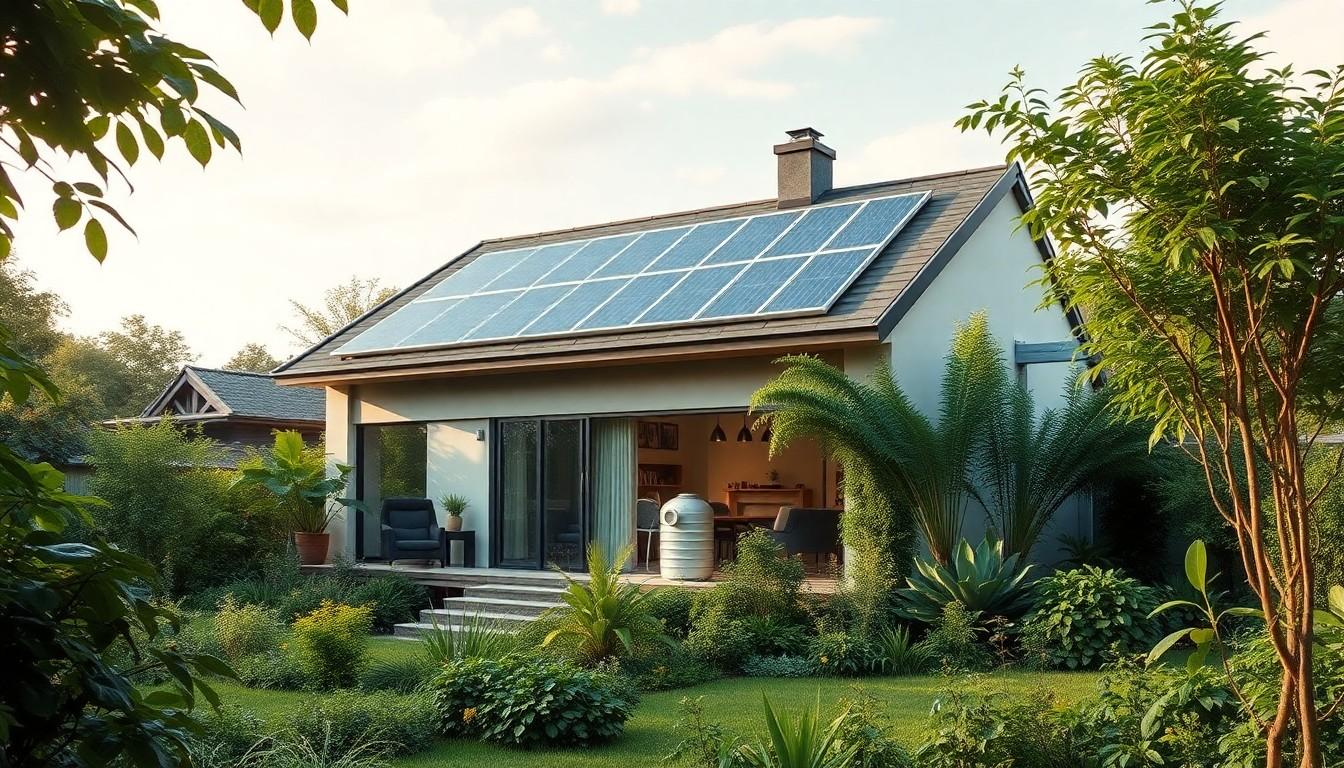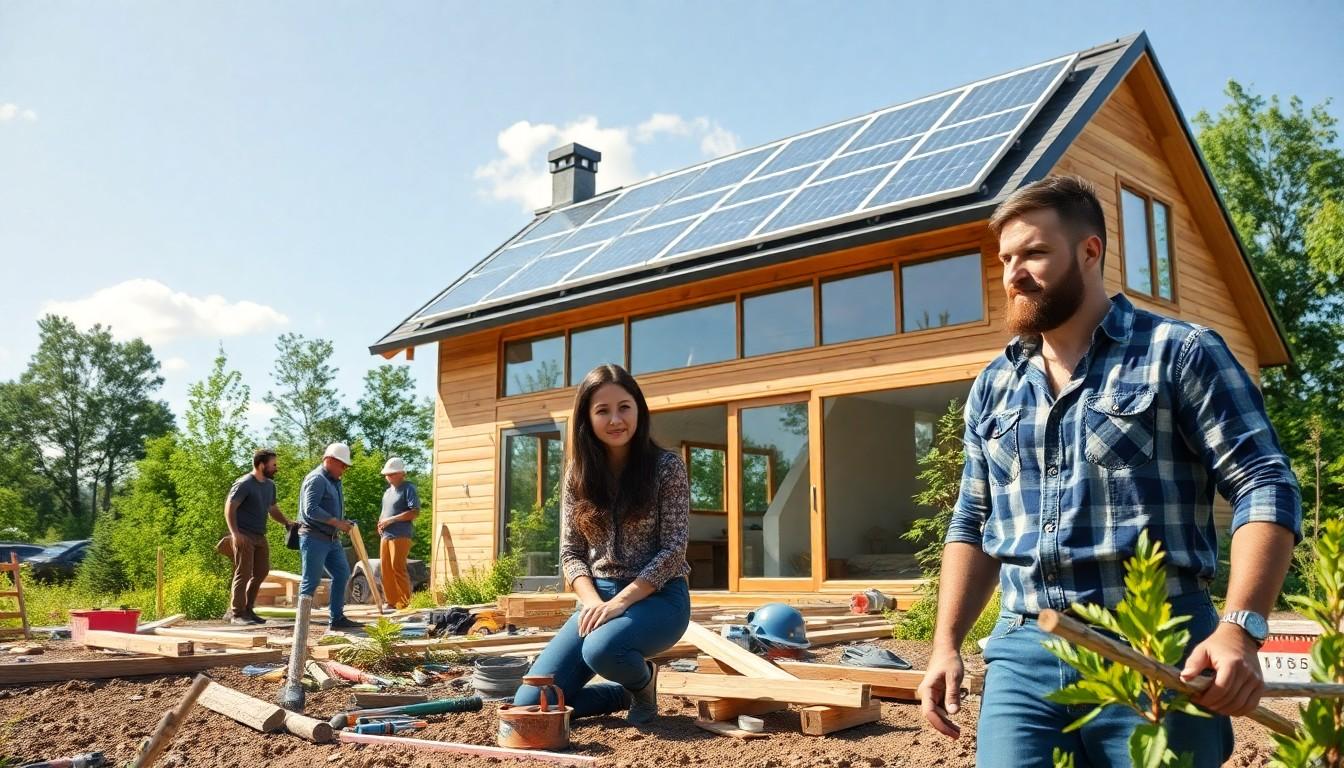In a world where the planet is throwing more tantrums than a toddler in a candy store, sustainable living builders are stepping in like superheroes in hard hats. These eco-conscious architects and contractors don’t just throw up walls; they craft homes that hug the earth while making your neighbors green with envy. Imagine living in a space that’s not only stylish but also gentle on Mother Nature—sounds like a dream, right?
sustainable living builders
Sustainable living builders focus on constructing homes that minimize environmental impact. These professionals utilize eco-friendly materials, energy-efficient systems, and innovative designs to create comfortable living spaces. Homeowners appreciate how these builders incorporate renewable energy sources like solar panels or wind turbines in their projects.
Design principles often emphasize natural light and ventilation, enhancing indoor air quality and reducing energy costs. Many sustainable living builders prioritize functionality alongside aesthetics, ensuring each space fulfills its purpose while remaining visually appealing. Moreover, water conservation features, such as rainwater harvesting and low-flow fixtures, play a significant role in sustainable construction.
New trends also emerge within sustainable building practices. Modular and prefabricated homes gain traction, reducing waste and promoting efficient use of resources. Builders continuously research sustainable technologies and materials to integrate into their projects.
By focusing on sustainability, these builders create long-lasting homes that benefit their occupants and the environment. The appeal of sustainable living extends beyond aesthetics; it encompasses healthier lifestyles and reduced utility expenses. Community engagement often characterizes their approach, as these builders collaborate with local organizations to foster sustainable development within neighborhoods.
Ultimately, sustainable living builders represent a shift toward responsible growth. They play a vital role in shaping the future of residential construction, ensuring homes harmonize with nature while meeting contemporary needs. Their commitment to eco-friendly designs paves the way for a greener planet.
Benefits of Sustainable Living Construction

Sustainable living construction offers significant benefits for homeowners and the environment. It enhances the overall quality of life while minimizing ecological footprints.
Environmental Impact
Constructing homes with sustainable practices greatly reduces harmful effects on ecosystems. Eco-friendly materials often feature longer lifespans, limiting waste in landfills. Water conservation measures, like rainwater harvesting systems, lower water usage and enhance resources. Utilizing energy-efficient systems, such as solar panels, decreases reliance on fossil fuels and lowers greenhouse gas emissions. Natural light and ventilation contribute to healthier indoor environments, improving air quality and comfort levels. These enhancements promote biodiversity and protect native habitats while creating spaces that encourage a connection to nature.
Economic Advantages
Building sustainably results in substantial financial benefits over time. Energy-efficient systems significantly reduce utility costs, allowing for savings on monthly bills. Eco-friendly materials frequently require less maintenance, lowering long-term repair expenses. Many sustainable homes also qualify for tax incentives or rebates, providing immediate financial relief. The market value of homes constructed with sustainability in mind often appreciates more rapidly, attracting eco-conscious buyers. Community collaboration in sustainable projects fosters economic growth and creates lasting value for neighborhoods. Consequently, sustainable living construction aligns financial incentives with responsible growth.
Key Features of Sustainable Living Builders
Sustainable living builders incorporate several key features that define their approach.
Innovative Materials
Sustainable builders utilize materials like bamboo, reclaimed wood, and recycled metal to craft their homes. These materials not only reduce waste but also contribute to a healthier indoor environment. Companies often use non-toxic paints and finishes to minimize harmful emissions. Builders favor local sourcing to decrease transportation emissions, supporting regional economies. By choosing innovative, eco-friendly materials, they create structures that are both durable and visually appealing.
Energy Efficiency Solutions
Energy-efficient solutions form the backbone of sustainable living construction. Solar panels and wind turbines are often integrated for renewable energy. High-performance insulation reduces heating and cooling costs, enhancing overall comfort. Smart home technologies optimize energy usage, allowing homeowners to monitor their consumption actively. Advanced window designs promote natural lighting while minimizing heat loss. These energy efficiency measures lead to notable cost savings and a reduced carbon footprint.
Notable Sustainable Living Builders
Sustainable living builders are leading the way in eco-friendly construction, incorporating innovative techniques and materials. Their projects showcase the blend of aesthetics and sustainability, emphasizing the planet’s well-being.
Case Study: Builder A
Builder A specializes in using reclaimed wood and recycled materials. Their flagship project, a community-focused development, includes features like rainwater harvesting systems and solar panels. Designed for energy efficiency, homes stay cool in summer and warm in winter with advanced insulation. Homeowners benefit from reduced utility bills, thanks to smart technologies. Each residence encourages a sustainable lifestyle and connects residents with nature.
Case Study: Builder B
Builder B stands out for its commitment to modular construction. The builder reduces waste through prefabrication, delivering homes quickly while minimizing the ecological footprint. Their recent project features green roofs and native landscaping, promoting biodiversity within urban settings. They prioritize local sourcing, lowering transportation emissions in the building process. Clients appreciate the combination of style and sustainability, inspiring eco-conscious living.
Challenges Facing Sustainable Living Builders
Sustainable living builders encounter various obstacles in their mission to promote eco-friendly construction. High costs associated with sustainable materials often deter clients from choosing green options. Market demand for these homes fluctuates, impacting builders’ ability to consistently secure projects. Regulations and building codes may not always support innovative sustainable practices, complicating the construction process.
Labor shortages also present a significant hurdle. Skilled workers familiar with sustainable techniques remain in limited supply. Builders struggle to find professionals trained in energy-efficient systems, green materials, and design principles. Time constraints affect project timelines, particularly with newer practices requiring additional coordination.
Competition increases as more builders embrace sustainability, leading to an oversaturation in some markets. Differentiating themselves through unique features becomes crucial for standing out to potential clients. Many builders face pressure to balance eco-friendliness with aesthetic appeal and functionality, which complicates decision-making. Finding the right combination of design and sustainability is vital for long-term success.
Public awareness about sustainable living remains limited. Many consumers still prioritize cost over sustainability, placing additional pressure on builders to justify their pricing. Educational initiatives within communities can bridge this gap, but they require time and resources to establish.
Access to financing can also hinder projects. Lenders may hesitate to finance unconventional building methods or materials, limiting options for both builders and clients. Innovative financing solutions specifically targeting sustainable construction might improve accessibility.
Embracing these challenges while maintaining a commitment to sustainable practices is essential for builders aiming to reshape the housing landscape. With perseverance, they can create impactful solutions and raise awareness about the importance of eco-friendly living.
healthier living
Sustainable living builders are at the forefront of a crucial movement toward eco-friendly construction. Their innovative approaches not only enhance the aesthetic appeal of homes but also prioritize environmental responsibility. By utilizing sustainable materials and energy-efficient technologies, they create spaces that contribute to healthier living and reduced utility costs.
Despite facing challenges such as high material costs and labor shortages, these builders remain dedicated to promoting sustainable practices. Their efforts play a vital role in shaping a greener future for residential construction. As awareness of sustainable living continues to grow, the impact of these builders will undoubtedly resonate within communities, inspiring a new generation of eco-conscious homeowners.

